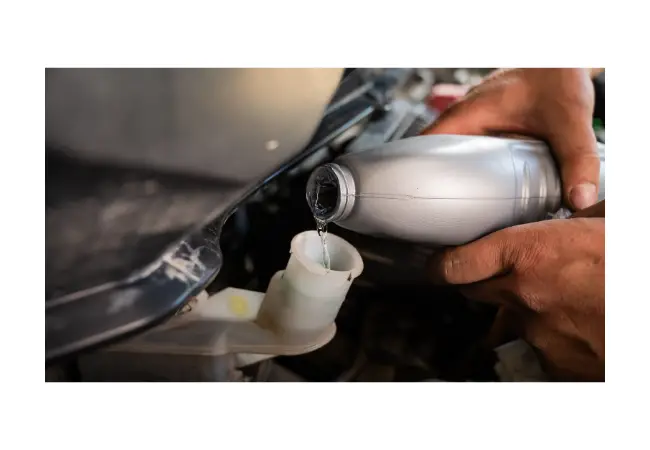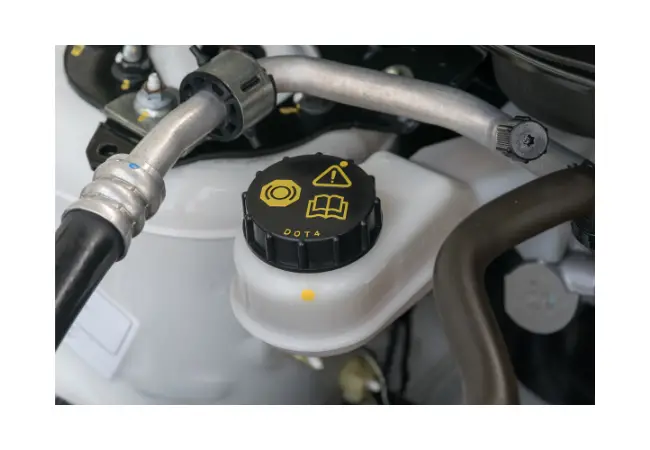The brake system of a vehicle is an intricate network of parts working together to ensure your safety. One of its crucial elements is the brake fluid, which transmits the force of your foot pressing on the brake pedal to the brake pads, allowing them to clamp onto the wheels and slow or stop the vehicle. On the other hand, brake pads, which directly interact with the wheel’s surface, are the wear-and-tear components that need to be replaced more frequently. A common question many drivers have is do you need to change brake fluid when changing pads. In this article, we will dig into this topic, offering insights from experts and guidelines from vehicle manufacturers.
Understanding vehicle maintenance procedures is vital for every vehicle owner. Not only can it save you from unnecessary expenses, but it can also ensure your safety on the road. Knowing when to change your brake fluid or brake pads, how to recognize the symptoms of failing components, and understanding the function of each part in your braking system are all critical elements of vehicle maintenance. Regular maintenance ensures the longevity of your vehicle, its optimal performance, and most importantly, it provides a safe driving environment for you and others on the road.
Contents
Changing Brake Pads

Several signs indicate that your brake pads may need replacing on your four wheels. The first and most common is a screeching or squealing noise when you apply the brakes. This sound is typically due to a small metal shim, known as an indicator, which is purposefully designed to create this noise as a warning when brakes wear out. Other signs can include a deep, grinding metal sound, indicating that the brake pads are completely worn out and possibly damaging the rotors; a decrease in braking performance; or the brake pedal vibrating when pressed. Additionally, most vehicles have a dashboard warning light that illuminates when the brake pads are nearing the end of their life.
Step-by-Step Process of Changing Brake Pads:
- Safety first: Park your vehicle on a level surface, engage the parking brake, and use wheel chocks to prevent rolling.
- Loosen the lug nuts: Do this before jacking up the car.
- Jack up the vehicle: Use a sturdy jack to lift your vehicle and place it securely on jack stands.
- Remove the wheel: Fully remove the lug nuts and then the wheel.
- Remove the caliper: Unscrew the caliper bolts and slide the caliper off the brake disc.
- Remove old brake pads: Slide out the old brake pads from the caliper.
- Install new brake pads: Apply brake grease to the back of the new pads and slide them into place.
- Reattach the caliper: Push the caliper piston back to fit over the new, thicker brake pads, then reattach the caliper.
- Replace the wheel: Put the wheel back on, screw on the lug nuts, and lower the vehicle.
- Repeat for other wheels: Follow the same steps for each wheel where you’re replacing the brake pads.
- Test drive: Conduct a slow, careful test drive to ensure the brakes are working properly. Remember, if you’re not comfortable performing this task, seek professional help.
Worn-out brake pads can pose significant risks. They may not respond as effectively, increasing your stopping distance and potentially leading to accidents. The metal-on-metal contact that occurs once the brake pad material has worn away can also damage the brake rotors, leading to an uneven surface or warping that reduces braking efficiency. This damage may necessitate expensive rotor replacement. Additionally, worn-out brake pads can affect the calipers, causing them to seize or leak, further adding to repair costs and compromising your safety.
The Role of Brake Fluid
The primary role of brake fluid is to transfer the force generated when you press the brake pedal to the brake pads at each wheel, which allows the vehicle to slow down or stop. It does this by filling a system of pipes and cylinders (the brake lines and master cylinder and wheel cylinders) that amplify the force applied to the brake pedal. Also, because it’s a hydraulic fluid, it’s virtually incompressible, maintaining its volume under pressure. This characteristic allows for consistent and reliable transmission of force through the braking system.
The quality and condition of brake fluid significantly impact braking performance. Fresh brake fluid is designed to withstand high temperatures produced during braking without reaching the boiling point. If it boils, it creates gas bubbles—an issue because, unlike the fluid, gas is compressible. When air is compressed, it reduces the hydraulic pressure within the system, leading to a spongy brake pedal and diminished braking capability, a phenomenon known as brake fade. Furthermore, good-quality brake fluid has moisture-absorbing properties, as any water in the system could boil and cause the same issues.
Several symptoms can indicate low or contaminated brake fluid. A soft or spongy brake pedal is a typical sign, as is needing to press the pedal further towards the floor than usual to achieve effective braking. Additionally, the brake warning light on your dashboard may illuminate. Contaminated brake fluids often become darker over time, shifting from a clear, amber color to a murky brown or black. This color change signifies that the old fluid is absorbing water and small particles of dirt, reducing its effectiveness. In some severe cases, contaminated fluid can even lead to complete brake failure, underlining the importance of regular brake fluid checks and when to change your brake fluid.
Do You Need to Change Brake Fluid when Changing Brake Pads
Whether to change your brake fluid when replacing brake pads often results in varied responses from experts. Some professionals argue that it isn’t necessary to change your brake fluid each time the brake pads are replaced, as long as the fluid is within its lifespan and not contaminated. On the other hand, some mechanics advocate that you change your brake fluid with a brake fluid flush during every brake service. The reason is that this proactive approach ensures the brake fluid is always in optimal condition, reducing the risk of braking performance issues.
Manufacturer recommendations also vary regarding this issue. Most vehicle manufacturers recommend changing the brake fluid at specific intervals, typically every 20,000 to 45,000 miles, or every 2 to 3 years, depending on the make and model of the vehicle. However, these intervals don’t always align with when brake pads need to be replaced. Therefore, unless the brake fluid is due for a change based on the manufacturer’s schedule or shows signs of contamination, many manufacturers don’t necessitate a brake flush every time you change your brake pads.
While routine brake pad changes may not always require a simultaneous brake fluid change, certain conditions might necessitate it. If the brake fluid shows signs of moisture contamination—like a dark, murky color—or if a brake system inspection (brake line or abs module) reveals corrosion or damage due to a contaminated brake fluid reservoir well, then a fluid change will be necessary.
Similarly, if the vehicle has been subjected to extreme driving conditions, such as racing or towing, which put more stress on the brake system, more frequent brake fluid changes may be advisable. Lastly, if the brake fluid is near or past the manufacturer’s recommended change interval, it would be practical to change the fluid while changing the brake pads.
Changing Brake Fluid: When and Why

The lifespan of brake fluid can vary greatly depending on factors like the type of fluid, driving conditions, and the specific vehicle model. However, most vehicle manufacturers recommend changing brake fluid approximately every 20,000 to 45,000 miles, or every 2 to 3 years, regardless of mileage. Some newer vehicles equipped with electronic maintenance reminders may also alert you when your brake fluid absorbs water and needs to be replaced. It’s important to consult your vehicle’s manual for the most accurate recommendations.
There are several signs that your brake fluid needs to be changed. These include a spongy or soft brake pedal, needing to press the brake pedal further down than usual, and the appearance of the brake warning light on your dashboard. Additionally, if the fluid in the rear brakes often appears dark or dirty when checked, this indicates contamination and the fluid should be changed. Regular brake fluid checks can help you identify these signs and ensure the effectiveness of your braking system.
Changing brake fluid is a somewhat complex process and involves the following steps:
- Prepare the vehicle: Secure the vehicle on a flat surface, making sure it’s in the park or neutral with the parking brake engaged.
- Locate the brake master cylinder: This is typically found in the engine bay.
- Remove old brake fluid: Using a syringe or similar tool, remove as much old fluid as possible from the reservoir.
- Add new fluid: Pour fresh brake fluid into the reservoir until it reaches the “Full” line.
- Bleed the brakes: Starting with the wheel furthest from the master cylinder and moving closer, open the bleed valves and let the fluid run out until it’s clear of bubbles and appears clean, keeping the reservoir topped up as you go.
- Check operation: After all the brakes have been bled, check the feel of the brake pedal. It should feel firm and responsive. If it doesn’t, the brakes may need to be bled again. This process should be carried out carefully; if you’re uncertain, it’s best to leave it to a professional.
Neglecting to change the brake fluid in your brake system as recommended can have several serious consequences. Old or contaminated brake fluid can lead to a decrease in braking performance, causing a spongy brake pedal and increased stopping distances. In extreme cases, it can even result in brake failure. Additionally, contaminated fluid can lead to corrosion and damage to the brake system’s internal components, potentially causing leaks and necessitating expensive repairs. A regular brake fluid flush helps to maintain optimal braking performance and prolongs the life of your vehicle’s brake system.
Conclusion
We have traversed the ins and outs of the brake system, focusing on brake fluid and brake pads. Brake fluid, an essential element, transfers the force from the brake pedal to the brake pads to slow or stop your vehicle. Brake pads, a wear-and-tear component, must be replaced regularly to maintain optimal braking performance. The debate about changing brake fluid when replacing brake pads has varying responses, with some experts suggesting it isn’t always necessary, while others recommend it as a best practice.
The decision to change brake fluid during brake pad replacement should be influenced by several factors. These include the condition and age of the brake fluid, the vehicle manufacturer’s guidelines, and the specific driving conditions the vehicle undergoes. If the brake fluid shows signs of contamination, is near or past its recommended change interval, or the vehicle has been subjected to extreme driving conditions, it would be practical to change the fluid while changing the brake pads.
Regular vehicle maintenance, including timely replacement of brake pads and fluid, is critical for your vehicle’s performance and safety on the road. Understanding your vehicle’s needs and staying ahead with preventive maintenance can save you from unexpected breakdowns and expensive repairs. Always keep an eye out for signs of wear or degradation in your brake system and consult a professional if you’re uncertain. By being proactive and responsible, you contribute to a safer driving environment for yourself and others.
